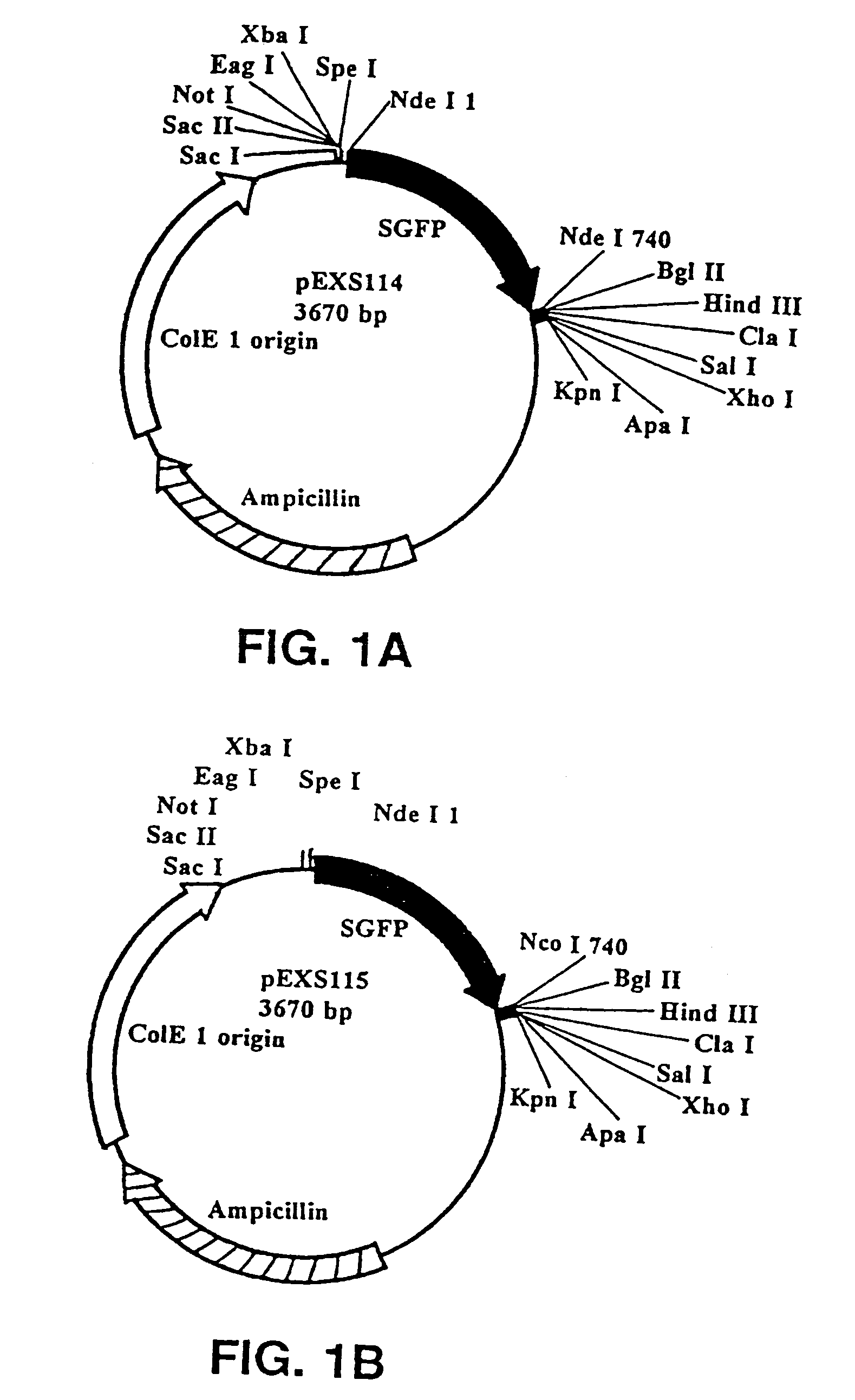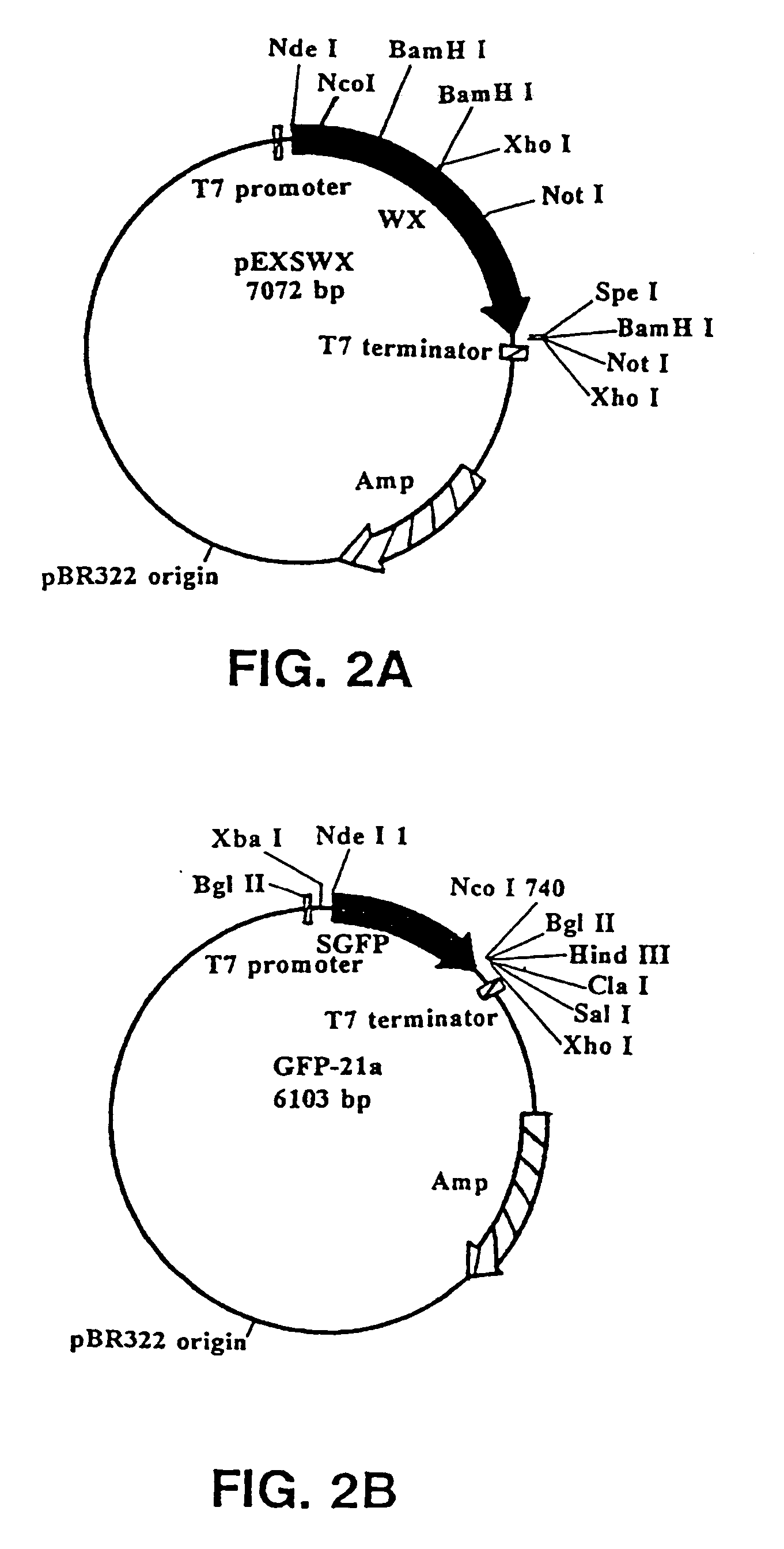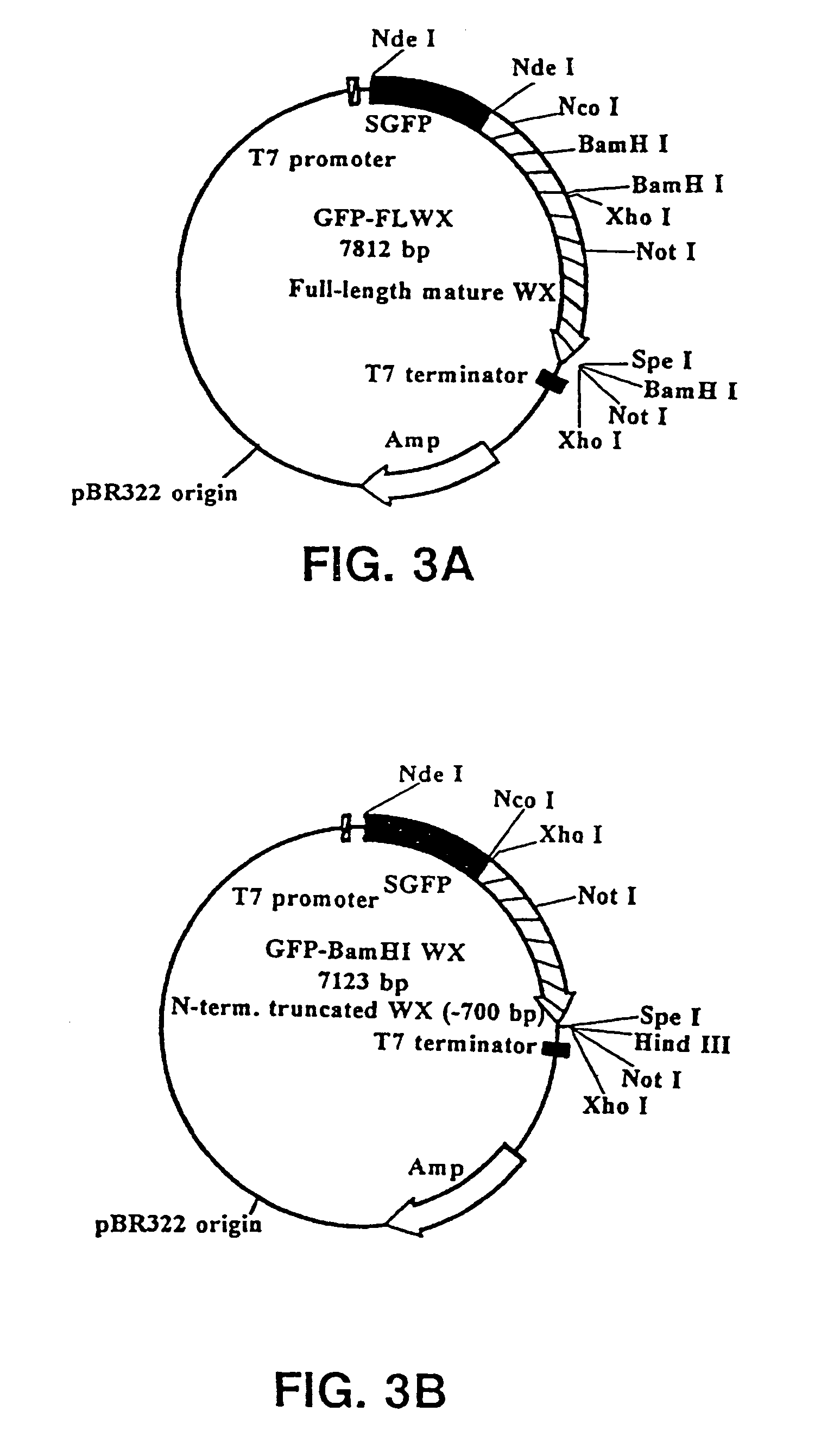Starch encapsulation
a technology of starch and encapsulation, which is applied in the field of starch encapsulation, can solve the problems of questionable applicability of the term “soluble” and achieve the effect of preventing degradation of a payload polypeptid
- Summary
- Abstract
- Description
- Claims
- Application Information
AI Technical Summary
Benefits of technology
Problems solved by technology
Method used
Image
Examples
example one
Method for Identification of Starch-encapsulatinq Proteins
Starch-Granule Protein Isolation:
[0086]Homogenize 12.5 g grain in 25 ml Extraction buffer (50 mM Tris acetate, pH 7.5, 1 mM EDTA, 1 mM DTT for 3×20 seconds in Waring blender with 1 min intervals between blending). Keep samples on ice. Filter through mira cloth and centrifuge at 6,000 rpm for 30 min. Discard supernatant and'scrape off discolored solids which overlay white starch pellet. Resuspend pellet in 25 ml buffer and recentrifuge. Repeat washes twice more. Resuspend washed pellet in −20° C. acetone, allow pellet to settle at −20° C. Repeat. Dry starch under stream of air. Store at −20° C.
Protein Extraction:
[0087]Mix 50 mg starch with 1 ml 2% SDS in eppendorf. Vortex, spin at 18,000 rpm, 5 min, 4° C. Pour off supernatant. Repeat twice. Add 1 ml sample buffer (4 ml distilled water, 1 ml 0.5 M Tris-HCl, pH 6.8, 0.8 ml glycerol, 1.6 ml 10% SDS, 0.4 ml B-mercaptoethanol, 0.2 ml 0.5% bromphenol blue). Boil eppendorf for 10 min...
example two
SER Fusion Vector:
[0119]The following fusion vectors are adapted for use in E. coli. The fusion gene that was attached to the probable SER in these vectors encoded for the green fluorescent protein (GFP). Any number of different genes encoding for proteins and polypeptides could be ligated into the vectors. A fusion vector was constructed having the SER of waxy maize fused to a second gene or gene fragment, in this case GFP.
[0120]pEXS114 (see FIG. 1a): Synthetic GFP (SGFP) was PCR-amplified from the plasmid HBT-SGFP (from Jen Sheen; Dept. of Molecular Biology; Wellman 11, MGH; Boston, Mass. 02114) using the primers EXS73 (5′-GACTAGTCATATG GTG AGC AAG GGC GAG GAG-3′) [SEQ ID NO:1] and EXS74 (5′-CTAGATCTTCATATG CTT GTA CAG CTC GTC CAT GCC-3′) [SEQ ID NO:2]. The ends of the PCR product were polished off with T DNA polymerase to generate blunt ends; then the PCR product was digested with Spe I. This SGFP fragment was subcloned into the EcoRV-Spe I sites of pBSK (Stratagene at 11011 Nort...
example three
Plasmid Transformation into Bacteria:
[0140]Escherichia coli competent cell preparation:
[0141]1. Inoculate 2.5 ml LB media with a single colony of desired E. coli strain: selected strain was XLIBLUE DL2IDE3 from (Stratagene); included appropriate antibiotics. Grow at 37° C., 250 rpm overnight.
[0142]2. Inoculate 100 ml of LB media with a 1:50 dilution of the overnight culture, including appropriate antibiotics. Grow at 37° C., 250 rpm until OD600=0.3–0.5.
[0143]3. Transfer culture to sterile centrifuge bottle and chill on ice for 15 minutes.
[0144]4. Centrifuge 5 minutes at 3,000×g (4° C. ).
[0145]5. Resuspend pellet in 8 ml ice-cold Transformation buffer. Incubate on ice for 15 minutes.
[0146]6. Centrifuge 5 minutes at 3,000×g (4° C. ).
[0147]7. Resuspend pellet in 8 ml ice-cold Transformation buffer 2. Aliquot, flash-freeze in liquid nitrogen, and stored at −70° C.
[0148]
Transformation Buffer 1Transformation Buffer 2RbCl1.2gMOPS (10 mM)0.209gMnCl2 4H2O0.99gRbCl0.12gK-Acetate0.294gCaCl2 2H...
PUM
| Property | Measurement | Unit |
|---|---|---|
| pH | aaaaa | aaaaa |
| pH | aaaaa | aaaaa |
| constant voltage | aaaaa | aaaaa |
Abstract
Description
Claims
Application Information
 Login to View More
Login to View More - R&D
- Intellectual Property
- Life Sciences
- Materials
- Tech Scout
- Unparalleled Data Quality
- Higher Quality Content
- 60% Fewer Hallucinations
Browse by: Latest US Patents, China's latest patents, Technical Efficacy Thesaurus, Application Domain, Technology Topic, Popular Technical Reports.
© 2025 PatSnap. All rights reserved.Legal|Privacy policy|Modern Slavery Act Transparency Statement|Sitemap|About US| Contact US: help@patsnap.com



